
Primearth EV Energy (PEVE) became a wholly-owned Toyota subsidiary in March. On October 1, the company held a ceremony to mark a new start under the name Toyota Battery.
Some 100 guests gathered to commemorate the occasion, including employees, Kosai City Mayor Takeshi Kageyama, and other local stakeholders.
The event was held at Kosai Battery Park (Arai Plant), a 30-minute drive from JR Hamamatsu Station. The site sits along the so-called “Battery Road,” a key artery connecting the inner city to the Okurado Interchange on Route 1, also known as the Hamana Bypass.

At the ceremony, the company’s president, Masamichi Okada, thanked the prefecture and the city for establishing the battery park and road. He also pledged to drive the Toyota Group’s electrification: “It goes without saying that we will contribute to the multi-pathway strategy with batteries for HEVs (hybrid electric vehicles), PHEVs (plug-in hybrid electric vehicles), and BEVs (battery electric vehicles), as well as secondary batteries for fuel cell vehicles. In addition, we want to explore all possible ways of supporting Toyota’s commitment to developing hydrogen-engine vehicles, including the potential for batteries to extend the cruising range or reduce fuel tank size.”
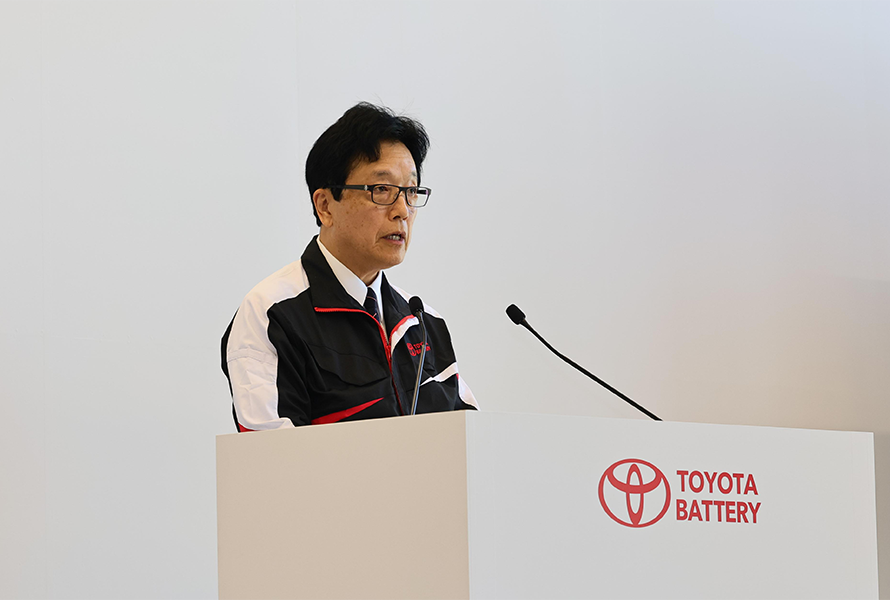
Toyota Battery President Masamichi Okada
Mayor Kageyama also spoke at the event. “As residents of Kosai City, we are immensely proud and pleased to see a new company bearing the Toyota name born here, in the hometown of Sakichi Toyoda,” he said. “Kosai City has adopted Sakichi’s emphasis on gratitude and creativity as a philosophy to guide our development. With these teachings as our starting point, we want to harness the power of batteries produced by Toyota Battery to forge a future for the community and industry.”
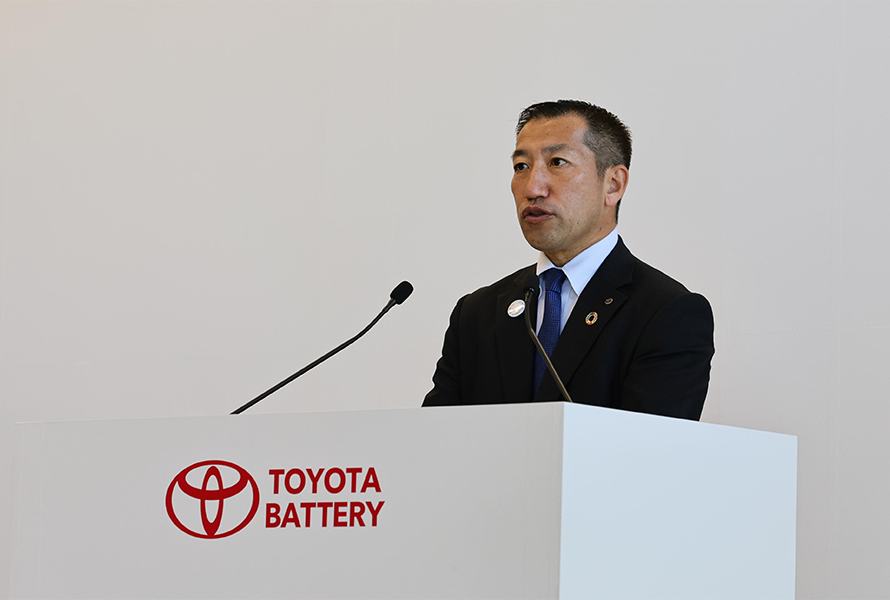
Kosai City Mayor Takeshi Kageyama
Next, it was Chairman Akio Toyoda’s turn to take the stage. In his speech, he reflected on Sakichi, a renowned inventor, and the high hopes he held for batteries.
Fulfilling Sakichi’s battery dream in Kosai
Chairman Toyoda

I’m Akio Toyoda. Thank you very much for inviting me to today’s inauguration ceremony for the new Toyota Battery. I would also like to express my deepest gratitude to the local community and authorities for their tremendous efforts.
In a quiet spot about a kilometer from the Sakaijuku Plant stands a stone monument acknowledging Kiichiro Toyoda’s assistance in developing rice fields on behalf of the local community. Originally, however, it seems that he intended this location to host an engine plant.
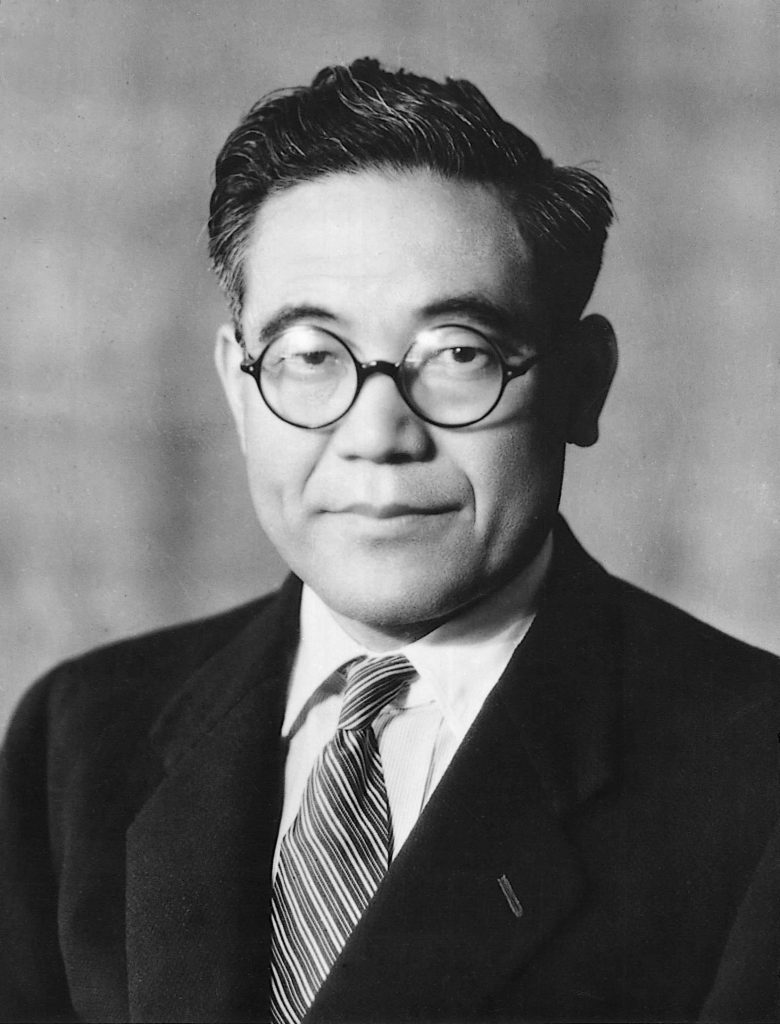
Kiichiro Toyoda
In his efforts to build engines in Kosai, I couldn’t help but sense Kiichiro’s affection for his father, Sakichi, who devoted his life to studying sources of power.
This fascination was sparked in 1890 when a young Sakichi was awed by the capabilities of the powerful steam engines and machinery he saw at the National Industrial Exhibition held in Ueno, Tokyo.

Sakichi Toyoda
This encounter stirred a passion for harnessing that “limitless power,” leading Sakichi to invent the power loom and later to storage batteries.
In 1925, Sakichi offered a prize of 1 million yen, or more than 10 billion yen in today’s money, to encourage battery development. His requirement was for batteries that could fly an airplane across the Pacific Ocean. Even today, nearly a century on, the world has not yet created a battery capable of such a feat.
Why did Sakichi put his money behind a quixotic battery quest that remains unrealized 100 years later? For me, the story holds two messages.
One is about the potential of batteries as a source of power. Sakichi believed that energy would become a major challenge for Japan, where oil and other resources are scarce, and I think he saw great promise in storage batteries that could utilize electricity generated by hydropower.
The other message is about the unlimited potential of the human mind. Sakichi lived by the conviction that nothing remains impossible forever and that intelligence and ingenuity could overcome any difficulty.
I believe that’s why he brushed aside the naysayers and put up the prize money, entrusting his dream to the next generation.
One person who greatly admired this aspect of Sakichi was my father, Shoichiro. In 1988, he established the Sakichi Toyoda Memorial House and placed great importance on engaging with the local community.
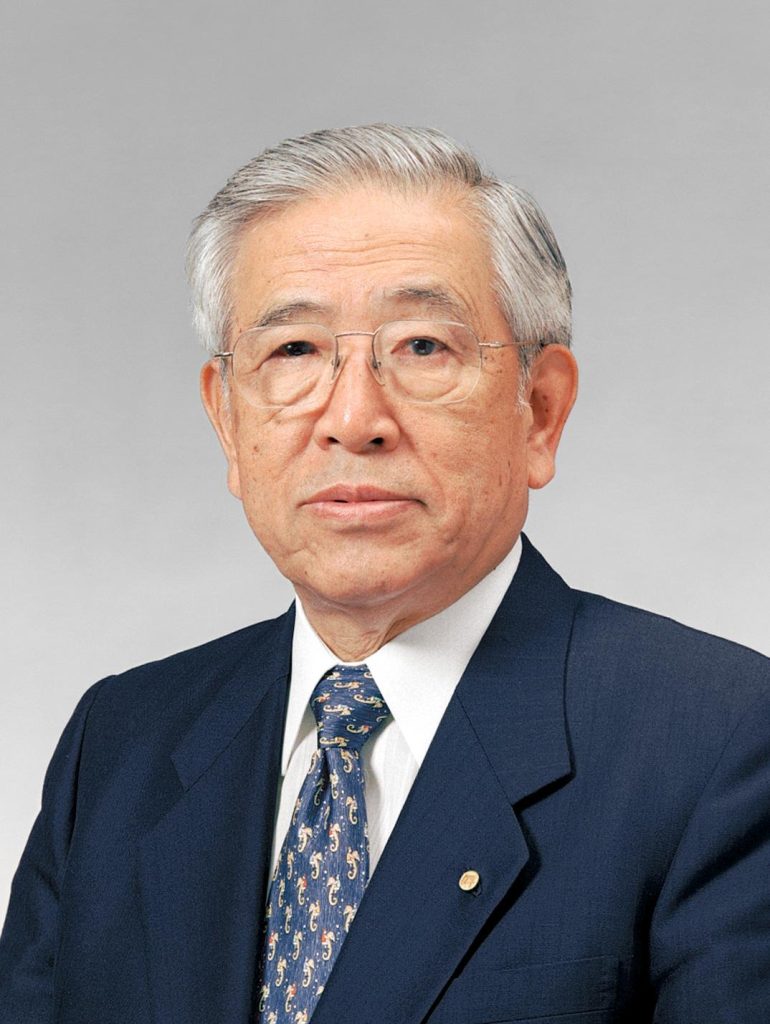
Shoichiro Toyoda
My father was also very passionate about the activities of the Kosai Young Inventors Club, keeping a watchful eye over the children’s endeavors as they pursued their dreams. The things that we cannot achieve ourselves will someday be accomplished by younger talent. I believe that this outlook, embodied by Sakichi’s prize money, was also shared by my father.
Before he passed away, my father frequently visited the Kosai Battery Park during its construction, eagerly awaiting the completion of the plant that Sakichi had entrusted to posterity.
I wonder what my father would have said if he was here today to witness the start of a new company bearing the Toyota name.
All of us here today are the inheritors of Sakichi’s dream. I am surely not alone in hoping that, by working together, we may one day create the batteries envisioned by Sakichi right here in Kosai.
Even if this proves beyond the reach of our generation, there are many children here who know the joy of inventing and creating.
“Creating something new means racking your brains, toiling, and losing yourself in the process. These moments are the ultimate pleasure. There is no greater joy or excitement than seeing someone enjoying or benefiting from a product that you worked hard to make. That’s what drives me to keep learning and striving to create something even better.”
These were the words of my father, Shoichiro. I believe that the human passion for helping others and for making the world a better place, which is passed down from generation to generation, is the true source of limitless power.
Today, I pledge to keep this passion alive. Thank you very much.
After starting out as the Panasonic EV Energy Co. in 1996, PEVE sustained Toyota’s electrification from the first-generation Prius (launched in 1997), producing batteries for approximately 25 million vehicles.
In addition to HEVs, the new company will also undertake battery production for BEVs.
As the first country to commercialize lithium-ion batteries, Japan has long possessed strengths in battery technologies.
In recent years, however, a market expansion has been accompanied by the rapid growth of Chinese and South Korean companies. With improved quality, their competitively priced batteries have upended the existing market share.
Batteries are the most critical technology for achieving carbon neutrality by 2050, and competition over public and private sector investment is intensifying worldwide, including in Europe and the United States.
While spearheading the group’s battery business, the new Toyota Battery will also strive to boost Japan’s competitiveness in this important field.
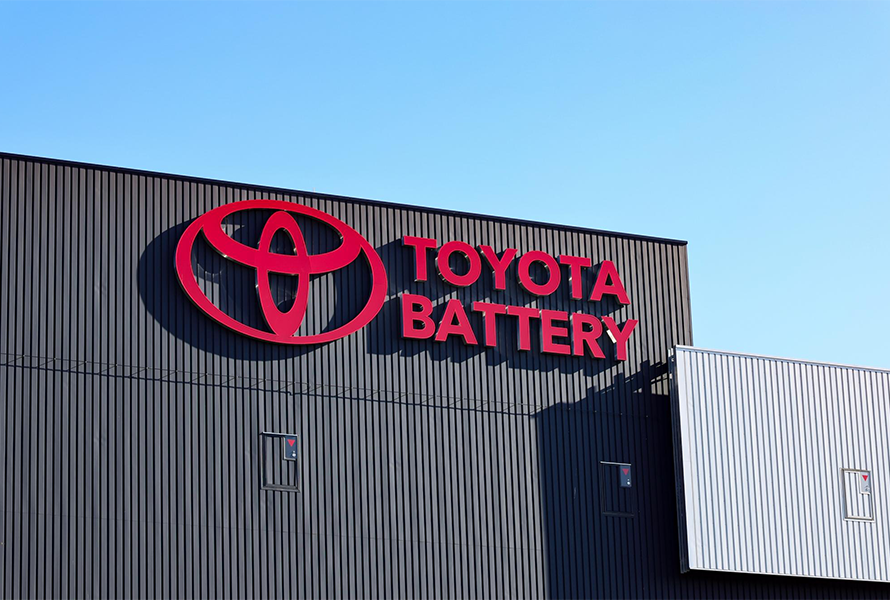
History of Toyota Battery
・Dec 1996 Panasonic EV Energy Co. Ltd. established (Ownership: Toyota 40%, Panasonic Holdings* 60%)
・Oct 2005 Increased capitalization due to HEV market expansion (Toyota 60%, Panasonic HD 40%*)
・Jun 2010 Renamed Primearth EV Energy Co., Ltd. Capital increase by Toyota (Toyota 80.5%, Panasonic HD 19.5%)
* At the time, Matsushita Group (Matsushita Electric Industrial Co., Ltd. & Matsushita Battery Industrial Co., Ltd.)
Source: https://toyotatimes.jp/
